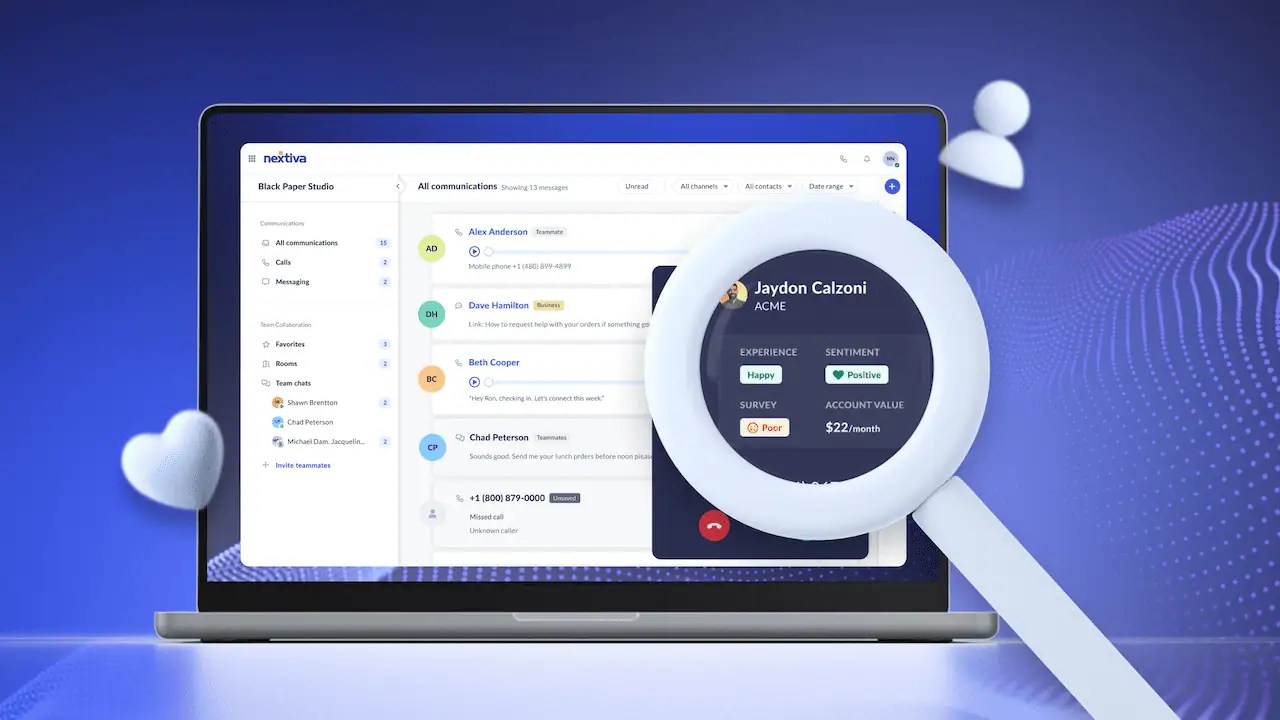Digital transformation uses the latest technology tools to help you improve business processes and systems.
With the rise of artificial intelligence (AI) and machine learning, many companies are exploring ways to transform their operations to include AI in their business functions. The main objective of digital transformation is to improve the experience of working with internal team members, external customers, and partners.
But first, it’s important to analyze the existing tech stack to see what’s working and what needs work.
You can then explore these digital transformation tools to help you fill the gaps.
What Are Digital Transformation Tools?
Digital transformation tools are solutions that help companies augment technology to improve processes and deliver increased value. These tools take you through a journey of evolving with technology, changing your workflows, and delivering higher efficiency across the business.
Digital transformation doesn’t have a precise endpoint, as it’s not a destination. When your environment keeps changing, you need to consistently adapt and evolve. For enterprises, digital transformation aims to enhance the end-user experience and employee productivity.
This transformation can include migrating data to a cloud service, leveraging new technologies with AI for process automation, and other changes that improve the current setup and processes.
Types of Digital Transformation Tools
Multiple business aspects are directly or indirectly crucial to generating revenue. Digital transformation tools streamline these aspects using new approaches and initiatives.
Let’s look at various types of digital transformation tools that work to streamline various business aspects.
Communication and collaboration software
Communication is the core of any business, directly impacting productivity, performance, and social capital. Social capital represents shared values and resources that allow individuals to work together toward a common goal.
Traditional communication tools, like emails, present some challenges to businesses. For example, they’re uneditable. For effective communications, you need a transparent solution (like customer relationship management software like Salesforce or HubSpot) to help employees understand the context of communications and avoid miscommunication.

Communication and collaboration tools offer real-time messaging features to help with information exchange for quick decision-making. These tools have features like file sharing, mentions, and platform integrations, making it easier for teams to sync across various platforms.
These platforms help teams streamline communications while collaborating on tasks and projects. Marketing teams, for example, use cloud-based communication and collaboration tools like Slack or Microsoft Teams to discuss campaign ideas asynchronously.
Related: How to Approach Enterprise Digital Transformation in the Age of AI
Video conferencing tools
Video conferencing software facilitates face-to-face interactions, such as remote meetings, presentations, and brainstorming sessions. This software increased in popularity after the COVID-19 pandemic when many teams began working remotely. Before COVID-19, sales teams used these tools extensively to connect with globally distributed clients.
Internal and client-facing teams currently leverage these tools to communicate with each other, partners, or clients.

Video conferencing apps, like Zoom or Google Meet, offer many features that cater to the needs of such teams.
- Screen sharing: You can share your screen with all meeting participants, keeping everyone on the same page.
- Recording capabilities: Video conferencing software has recording features that make it easier to revisit a discussion after a meeting. Many AI tools have made using these recordings easier by generating meeting minutes that you can share with participants.
- Breakout rooms: You can easily divide meeting participants into smaller groups using breakout rooms, where they can collaborate as focused teams and return to the meeting whenever they’re ready.
These tools are great for businesses with remote or hybrid work settings or clients worldwide.
Project management tools
When working on a project with multiple variables, timelines, people, deliverables, and processes, effectively keeping track of everything can be tricky. Your spreadsheet software will only help you to a certain extent when the number of variables increases.
Project management tools help in such situations. These apps make it easy to organize tasks and deadlines and foster effective communication with project teams. They also simplify task delegation, progress tracking, file sharing, and the management of milestones while keeping people and workflows aligned toward project completion.
Project management tools make collaboration easier across the organization and within a specific working group. Transparency, security controls, and documentation all help close the loop.
Below are some notable project management tools on the market.
- Asana: Good for creative and marketing teams
- Notion: Best for founders and startups
- Jira: Good for software engineers
- Rocketlane: Best for customer success managers
- Basecamp: Good for marketing managers
- Hive: Best for graphics designers
This classification is based on the job titles of reviewers of specific products on G2.
Collaborative workspaces
Collaborative workspaces let users work together on the same document, sheet, or board. This software makes collaboration seamless while preventing version control issues.
You can share a Google Docs link with your team, and they can work on the same document simultaneously. Collaborative workspace features often overlap with some features of video conferencing software, like whiteboards. In video conferencing meetings, participants can work together to share and illustrate ideas.
A collaborative workspace is a good fit for your business if you rely heavily on document-based collaboration and work in a remote or hybrid setting. Google Workspace and Microsoft 365 offer many collaborative workspace solutions you can explore to find the one that fits your needs.
Social intranet platforms or internal wikis
Social intranet platforms, or internal wikis, use social feeds and employee forums to encourage employees to collaborate and share knowledge. They’re an organization’s internal knowledge repository and assist in employee onboarding.
You can use these platforms to share company news, updates, and internal documentation to guide your people in following set processes. Using this software, you can share employee awards and recognize people for their achievements, improving your team’s morale.
Confluence is an excellent example of this type of software. It helps you keep internal documentation, updates, and news accessible to authorized people.
Unified communications software
Unified communication consolidates conversations from internal channels, such as VoIP phone calls, video conferencing, messaging, and email, into a single interface. This simplifies communication management and empowers your people to be attentive and more focused on internal discussions.
Bringing channels together prevents important communications or expected actions from slipping through the cracks. It also streamlines internal communication for teams.

Nextiva’s unified communication as a service (UCaaS) is a reliable platform with an uptime of 99.999%. It maintains a trust page that shows the availability of all systems.
Live chat software
Live chat software makes it easier for businesses to support website visitors in real time. People who land on your website can communicate their needs on chat to get the support and assistance they need. This accelerates the resolution of visitors’ queries, improving customer experience on your website.

Nextiva’s live chat solution plugs AI into the chat feature, reducing the response time for visitor queries. Chat responses take an average of four minutes to solve and cost $20. With AI, you can respond instantaneously and lower your business costs.
Many live chat solutions engage visitors in submitting their details, which results in lead capture. The chat solution asks questions to encourage visitors to share what they need and to contextualize it with more information. It gives your inbound teams the necessary details to qualify leads and prioritize sales efforts.
Related: How to Add Live Chat to Your Website (Plus Best Practices)
Where Does AI Fit into Digital Transformation?
Businesses are excited to explore how AI can help transform their processes and systems toward better efficiency. The data suggest that almost half of companies today already use AI in at least one business function.

Source: Exploding Topics
Below are some ways AI tools act as a catalyst (through automation) to fuel digital transformation.
Improve collaboration
AI makes conversations more efficient and contextually accurate. Based on the data it acquires, AI helps write messages (or emails), saving internal or external communication time.
In video conferencing, AI summarizes meeting minutes, helping participants absorb the essence of a discussion while keeping them accountable for their actions. Here’s an example of how Reelay summarizes meeting minutes for enterprises using AI.

Source: Reelay
Personalize communications
AI uses employees’ interests and roles to help curate news and updates on their social intranet platforms. The algorithms track employees’ activity and adapt in real time to deliver relevant content, improving their work experience.
Intelligent algorithms track individual activity and preferences to curate a tailored hub for every employee. Personalized intranets adapt in real time to map relevant content to each user for a smarter work experience.
Some businesses also deploy AI chatbots on their intranet to streamline internal communication and processes. These bots manage the high volume of IT questions people ask daily, reducing the number of tickets the IT or HR department needs to respond to and keeping them focused on more critical support queries.
Expedite customer service
On the customer side, live chat solutions powered by AI make relevant suggestions regarding troubleshooting steps. They guide visitors toward helpful knowledge base articles and promote self-service.

Customer experience improves with faster solutions. These chatbots can often hand a communication over to a live agent when the query becomes too complex or when the customer urgently wishes to speak to a human. This transfer is seamless and doesn’t cause friction in the interaction.
Related: 5 Incredible Examples of Successful Digital Transformation
Experience Successful Digital Transformation With Nextiva
The tools mentioned above will help improve your processes and systems, but improvement is not as simple as turning a key. A change will occur, and a change management process will need to be implemented.
You’ll need buy-in from various stakeholders, a shared understanding of goals, and new ways of working. Digital transformation is not just a technology shift; it’s also a shift in culture and overall strategy.
Choose the best digital transformation tool based on what best aligns with your business and how easily you can accommodate change.
If you’re looking for a reliable partner to improve communication, consider Nextiva.
Related: Best Digital Transformation Companies & Their Key to Success
One app for all your conversations.
All your business phone calls, texts, meetings, and contacts in one place with Nextiva’s all-in-one contact center solution.

















 Productivity
Productivity 










